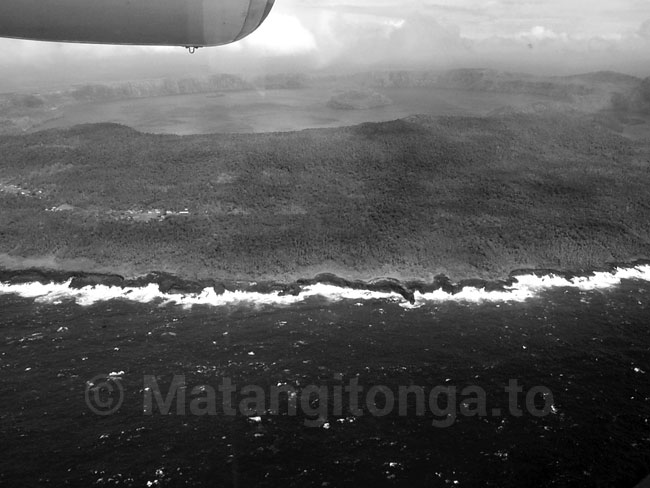From Matangi Tonga Magazine Vol. 17, no. 3, November 2002.

By Mary Fonua.

When Paul Taylor visits Tonga, he may be rather hoping there will be an earthquake. But he can be forgiven, because he is a volcanologist, from Australia, who studies the activity of volcanoes in the South Pacific, and particularly Tonga, where earthquakes often signal the emergence of interesting new volcanic islands.
Paul said the people of Niuafo‘ou, in the far north, live on Tonga’s most active volcano, and he came to Tonga this time to run disaster-preparedness workshops, with Alejandra Mejia-restrepo, talking to Niuafo‘ou schools about what to do in the event of a volcanic eruption. They were also preparing educational materials for printing.
Niuafo‘ou, a doughnut-shaped island, 450 km north of Tongatapu, and 130 km from its nearest neighbour, Niuatoputapu, has seen ten eruptions since 1800, and at least three of them have destroyed villages and killed inhabitants.

Still active
During the last big eruption in 1946, lava flows destroyed the wharf and the village of Angaha.
“There are likely to be more in the future,” said Paul. “It could be tomorrow or it could be in 50 years time, we just don’t know.” Large areas of sulphur-smelling hot springs that appeared on the shores of Vai Si‘i, in May 1999, indicated that the volcano is still active in the lake, he said.
Lava bombs
Tonga’s Ministry of Lands is establishing a seismic monitor in Niuafo‘ou with the help of Japanese aid, while Paul’s awareness project in schools has been funded by UNESCO, following a recommendation from Tonga’s National Disaster Preparedness and Evacuation Committee.
Because of Niuafo‘ou’s isolation, an evacuation of the 800 inhabitants in the event of a coastal eruption would pose “great difficulty” said Paul. “Getting in or out would be a nightmare.” Ash eruptions, lava bombs or red hot molten rocks the size of cars being thrown up into the air, and associated lightening storms, would make aircraft landing impossible.

Landing boats on the island is difficult at the best of times. The coastline is rugged and pounded by surf, and the wharf is located in a hot spot of past eruptions.
However, “most eruptions in the past have been small and localised,” said Paul. The education project shows people where they live in relation to the safest spots on the 8 km wide island, how to get to the safer places, how to protect their water supplies from acid rain, and how to use their clothing to protect their lungs from ash; it also identifies people in their community who will need help, and teaches other survival skills in the event of a volcanic eruption.



